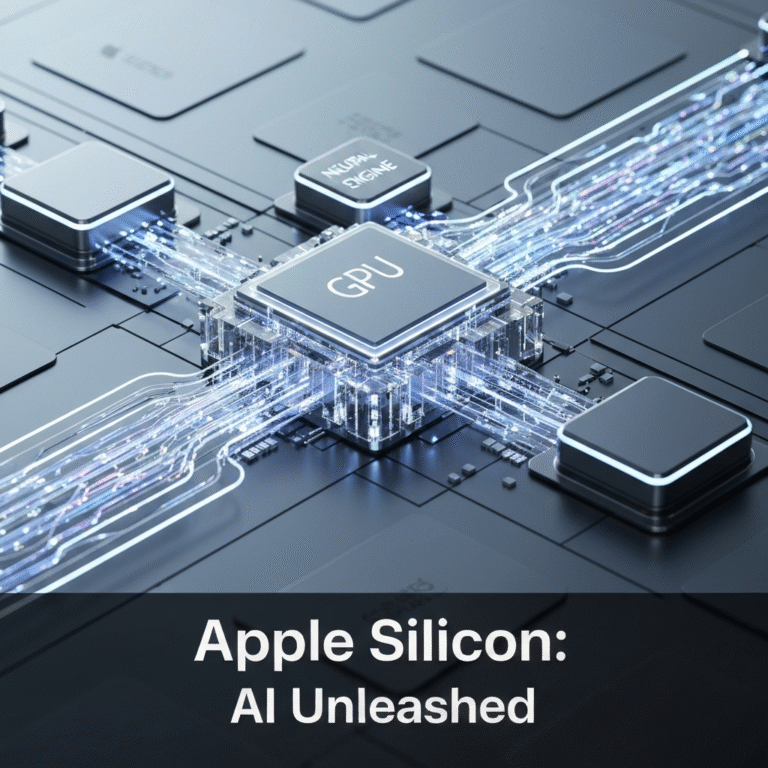
🔑 Key Takeaway
AI regulation refers to the laws, policies, and ethical guidelines governments and regulatory bodies are creating to ensure artificial intelligence is developed and used safely, transparently, and fairly. The EU AI Act uses a risk-based system, imposing strict rules on high-risk AI applications. The U.S. employs a mix of executive orders and sector-specific rules rather than a single federal law. Key ethical concerns addressed by these rules include algorithmic bias, data privacy, and accountability. Read on for a complete guide to the global AI policy landscape.
The term ai regulation refers to the laws and policies governments are creating to manage the development and use of artificial intelligence. With the rapid expansion of AI capabilities, the need for effective guardrails has become increasingly apparent. According to the 2025 AI Index Report from Stanford HAI, a notable surge in attention on this topic was demonstrated when 127 new AI-related policy documents were issued globally in 2023 alone. This article aims to simplify these complex global regulations for tech enthusiasts and professionals, covering the distinct approaches of the EU, US, and China.
The core debate often centers on finding a balance between fostering innovation and ensuring public safety. This guide will compare different global approaches to ai policy and explain the real-world impact on developers and businesses, touching on key ai ethics issues and providing updates on ai regulation news. By breaking down the essential components of these frameworks, we will provide a clear, practical overview to help you navigate this evolving landscape.
ℹ️ Transparency
This article explores global AI regulation based on official government sources and academic research. All information is based on verified studies and reviewed by our expert. Our goal is to inform you accurately.
What is AI Regulation and Why Does It Matter?
AI regulation is the framework of laws, rules, and guidelines designed to oversee the development, deployment, and use of artificial intelligence systems. Its primary goal is to mitigate potential harms—such as bias, privacy violations, and safety risks—while still encouraging beneficial innovation. As AI becomes more deeply integrated into daily life, from healthcare to finance, these rules have become essential for establishing trust and accountability. Understanding what is ai regulation is the first step for any tech professional or enthusiast looking to grasp the future of the industry and the government regulation of ai.
The Core Principles: Safety, Transparency, and Fairness
The foundation of most AI regulatory frameworks rests on three core principles. Safety guidelines aim to ensure that AI systems operate reliably and do not pose physical or psychological harm to users. Transparency involves the need for developers to be clear about how an AI system functions, the data it relies on, and its inherent limitations. Finally, fairness addresses one of the most significant ai ethics issues by working to prevent AI systems from making discriminatory decisions or amplifying existing societal biases.
The Debate: Innovation vs. Safety
A central tension in the development of AI policy is the balance between innovation and safety. One side of the argument suggests that overly strict regulation could stifle technological progress, slow down research, and place a nation at a competitive disadvantage. The counter-argument is that without clear rules, the potential for harm to individuals and society is too significant, which could erode public trust in AI. A 2023 article in the peer-reviewed journal Policy and Society from Oxford Academic highlights this, noting that regulatory responses often lag behind technological advances. Most modern policies attempt to find a middle ground by using risk-based approaches to balance fostering beneficial innovation with robust safety frameworks.
Key Global AI Policies Compared
The world’s major tech powers—primarily the European Union, the United States, and China—are taking distinctively different approaches to ai regulation. These differences often reflect varying priorities, from the EU’s focus on fundamental rights to the US’s emphasis on market-driven innovation and China’s goal of state-led development. The table below provides a high-level comparison of these key global ai policy frameworks to better understand ai regulation around the world.
| Feature | European Union (EU AI Act) | United States | China |
|---|---|---|---|
| Core Approach | Fundamental Rights, Risk-Based | Market-Driven, Sector-Specific | State-Driven, Development & Control |
| Legal Status | Comprehensive Federal Law | Executive Orders, State Laws | National Strategy, Specific Regulations |
| Key Focus | High-Risk Systems, Prohibited AI | Innovation, Voluntary Frameworks | Algorithmic Registry, Content Control |
The EU AI Act: A Risk-Based Approach
The European Union’s approach to european ai regulation is defined by its comprehensive ai law, known as the EU AI Act. According to the official legal text from EUR-Lex, the framework categorizes AI systems into four tiers: unacceptable, high, limited, and minimal risk. High-risk systems, such as those used in critical infrastructure, employment, or law enforcement, are subject to stringent obligations, including conformity assessments, robust risk management, and meaningful human oversight. The regulation also bans “unacceptable risk” applications, such as government-led social scoring and AI designed for manipulative purposes, to protect fundamental rights.
The United States: A Patchwork of State and Federal Rules
The us ai regulation landscape is best described as a sector-specific and innovation-focused patchwork, as it currently lacks a single, comprehensive federal law. The primary federal action has been the White House’s Executive Order 14110, signed in October 2023, which directs federal agencies to establish safety standards and promote trustworthy AI. Alongside this, the NIST AI Risk Management Framework provides voluntary guidance for organizations. Meanwhile, states like California and Colorado are developing their own rules, contributing to a complex and fragmented regulatory environment for ai regulation in the us and federal ai regulation.
China’s Strategy: State Control and Development
China’s approach to china ai regulation is driven by the state’s dual objectives of accelerating AI development to achieve global leadership while maintaining firm social and political control. Rather than a single overarching law, China has issued specific regulations for areas like generative AI and algorithmic recommendations, which often require providers to register their services with the government. A 2024 analysis of China’s draft AI law by the Center for Security and Emerging Technology (CSET) notes that the framework establishes a system for grading AI and specifies clear liability for developers, providers, and users, reflecting a top-down governance model.
The Ethical Dimension of AI Rules
Beyond technical safety, a primary driver of AI regulation is the need to address complex ai ethics issues, particularly algorithmic bias, data privacy, and the challenges of generative AI. These pillars of ai ethics and governance are deeply interconnected, and effective ai governance policy aims to address them holistically. Understanding these ethical dimensions is crucial for grasping why AI rules are structured the way they are.
Tackling Algorithmic Bias
Algorithmic bias occurs when an AI system’s outputs create unfair or discriminatory outcomes, such as disadvantaging certain demographic groups in hiring, loan applications, or even criminal justice. This is one of the most pressing ai ethics concerns. A 2024 research paper from MIT’s Economics department suggests that unchecked AI could lead to greater social stratification and calls for “preemptive safety nets” through public policy. Regulations like the EU AI Act address this by requiring that high-risk systems be trained on high-quality, representative data and undergo rigorous testing for bias before and during their deployment.
Data Privacy and AI: A Tightrope Walk
AI systems, particularly those based on machine learning, often require vast amounts of data for training, which can create significant data privacy risks. AI regulations are designed to work in tandem with existing data privacy laws, such as Europe’s GDPR. A 2024 white paper from Stanford HAI clarifies this relationship, noting that the EU AI Act is a “product safety law” that operates “without prejudice to the GDPR.” This ensures that the development and deployment of AI do not compromise fundamental data protection rights.
Rules for Generative AI and Deepfakes
The unique challenges of generative AI, such as the ability to create convincing deepfakes, spread misinformation, and generate content that may infringe on copyright, have prompted specific generative ai regulation. Emerging rules are focused on transparency. For example, many new policies mandate that AI-generated content must be clearly labeled as such, and deepfakes must be disclosed to viewers to prevent deception. Some regulations also require developers of generative models to provide summaries of the copyrighted data used for training their systems.
What AI Regulation Means for You
AI regulation is not just an abstract concept for governments and large corporations; it carries practical, real-world implications for tech professionals and business owners alike. Understanding these emerging rules is becoming essential for legal compliance, sustainable innovation, and maintaining the trust of your customers. This shift makes ai policy for companies a critical area of focus.
For Developers and Tech Professionals
For developers, the new wave of regulation emphasizes the need for thorough documentation, such as data sheets for datasets and model cards that explain a model’s performance characteristics. Building systems with transparency and human oversight in mind from the very beginning is also becoming a standard practice. To create more responsible and compliant products, developers can familiarize themselves with frameworks like the NIST AI Risk Management Framework, a voluntary guide from a U.S. government agency that helps manage AI risks in practice. This proactive approach is a cornerstone of any effective responsible ai policy.
For Business Owners and Leaders
Business leaders hold the responsibility to understand the AI tools they deploy, especially in high-stakes areas like human resources, customer service, and finance. It is increasingly important to conduct thorough due diligence on third-party AI vendors to ensure their tools align with regulatory requirements and ethical standards. A key step for any organization is to create and implement a clear ai acceptable use policy. This policy, which can be based on a corporate ai policy example, should guide employees on the responsible use of AI tools and ensure transparency with customers about how and when AI is being used in business processes.
FAQ – Your Questions on AI Regulation Answered
Is the US going to regulate AI federally?
The United States does not currently have a single, comprehensive federal law for AI regulation like the EU AI Act. Instead, the U.S. approach relies on a combination of the President’s Executive Order on AI, which directs existing agencies to create rules, and voluntary guidelines like the NIST AI Risk Management Framework. While several bills have been proposed in Congress, the focus remains on sector-specific rules and state-level legislation for now.
Does AI need to be regulated?
Yes, most experts and governments appear to agree that AI needs to be regulated to some extent. The goal is to mitigate significant risks such as algorithmic bias, privacy violations, and public safety threats while still encouraging innovation. Regulation aims to build public trust and provide clear rules for developers and businesses, ensuring that AI technologies are developed and used responsibly. The debate is often not about if AI should be regulated, but how.
What states have regulated AI?
Several U.S. states have passed or are considering AI-specific legislation. Colorado passed a landmark law in 2023 aimed at preventing algorithmic discrimination in insurance and other decisions. California has also been active with proposals related to automated decision-making and AI transparency. Other states like Utah, Virginia, and Connecticut have incorporated AI into their existing consumer privacy laws. This state-level action is creating a complex patchwork of rules across the country.
What is the main goal of AI regulation?
The main goal of AI regulation is to ensure that artificial intelligence systems are developed and used in a way that is safe, trustworthy, and respects fundamental human rights. This involves creating rules to prevent harms like discrimination and privacy breaches, establishing clear accountability for AI-driven decisions, and fostering public trust. Ultimately, the objective is to balance promoting technological innovation with protecting individuals and society from the potential risks of AI.
What are the 3 laws of AI?
The “Three Laws of Robotics” are fictional principles created by science fiction author Isaac Asimov and are not actual legal statutes. They are: 1) A robot may not injure a human being, 2) A robot must obey human orders unless it conflicts with the First Law, and 3) A robot must protect its own existence as long as it doesn’t conflict with the first two laws. While influential in shaping ethical discussions, real-world AI regulation is far more complex.
Limitations, Alternatives, and Professional Guidance
Research Limitations
It is important to acknowledge that AI regulation is a rapidly evolving field, and the laws discussed in this article are subject to change as technology and policy mature. The real-world impact of many of these regulations is still being observed, as some have only recently been implemented. A 2023 article from Oxford Academic on the governance of generative AI highlights a key challenge: governance gaps often persist because regulatory responses can be reactive and may lag behind the swift pace of technological advances.
Alternative Approaches
Beyond direct government mandates, several alternative approaches to AI governance exist. One model is co-regulation, where industry groups collaborate to create standards and codes of conduct under government oversight, blending flexibility with accountability. Another approach involves the adoption of voluntary, non-binding ethical frameworks and corporate self-governance. These can serve as a supplement or an alternative to hard law, allowing organizations to demonstrate a commitment to responsible AI. In many cases, a combination of these approaches may be the most effective strategy.
Professional Consultation
For businesses developing or deploying AI, especially in high-risk sectors like healthcare or finance, it is advisable to seek legal or compliance counsel. These professionals can help navigate the complex and fragmented regulatory landscape to ensure adherence to all applicable laws. Tech professionals should aim to stay informed through continuous education and by following guidance from standards bodies like NIST. Please note that this article is intended for informational purposes only and does not constitute legal advice.
Conclusion
To summarize, the world is moving decisively towards establishing rules for artificial intelligence, with different regions adopting unique strategies that reflect their political and economic priorities. From the EU’s rights-based framework to the US’s innovation-focused model and China’s state-led approach, a global consensus is forming on the need for oversight. The core principles of safety, transparency, and fairness are the common threads that underpin the future of ai regulation. While the specific rules may differ, the shared goal is to harness AI’s immense benefits while responsibly managing its potential risks.
The Tech ABC is committed to demystifying complex tech topics to help you stay ahead in a rapidly changing digital world. The development of AI policies will continue to shape technology, business, and society for years to come, making it essential for professionals and enthusiasts to remain informed. To continue learning about the latest in artificial intelligence and its impact on your world, explore our other AI guides.
References
- EUR-Lex – Regulation (EU) 2024/1689 (Artificial Intelligence Act):
https://eur-lex.europa.eu/legal-content/EN/TXT/?uri=CELEX%3A32024R1689 - The White House – Executive Order 14110:
https://bidenwhitehouse.archives.gov/briefing-room/presidential-actions/2023/10/30/executive-order-on-the-safe-secure-and-trustworthy-development-and-use-of-artificial-intelligence/ - NIST AI Risk Management Framework:
https://www.nist.gov/itl/ai-risk-management-framework - Center for Security and Emerging Technology (CSET) – China’s AI Law Draft:
https://cset.georgetown.edu/publication/china-ai-law-draft/ - Stanford HAI – Rethinking Privacy in the AI Era:
https://hai.stanford.edu/assets/files/2024-02/White-Paper-Rethinking-Privacy-AI-Era.pdf - Oxford Academic – Governance of Generative AI:
https://academic.oup.com/policyandsociety/article/44/1/1/7997395 - MIT Economics – Harms of AI:
https://economics.mit.edu/sites/default/files/publications/Harms%20of%20AI.pdf - Stanford HAI – The 2025 AI Index Report:
https://hai.stanford.edu/ai-index/2025-ai-index-report




